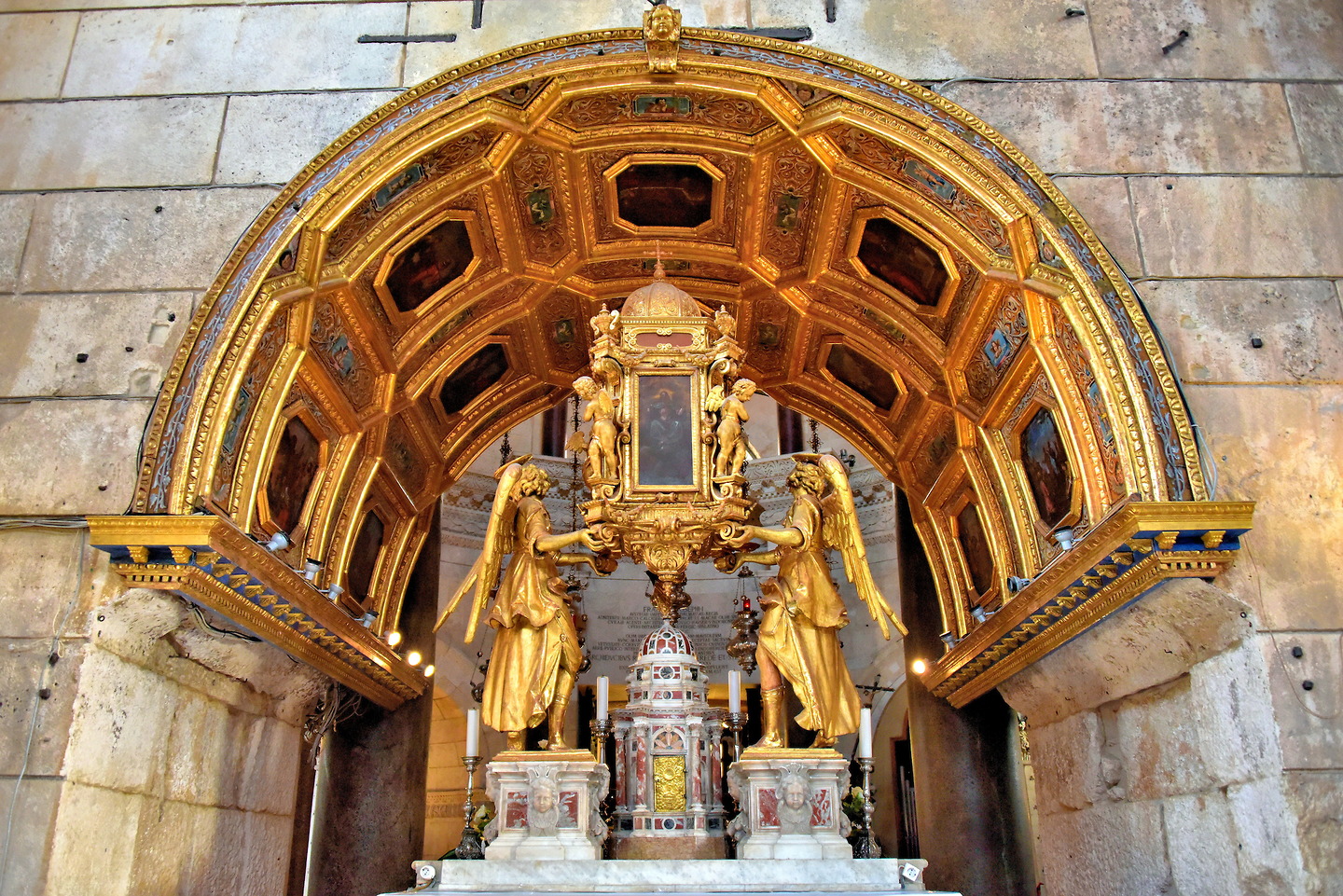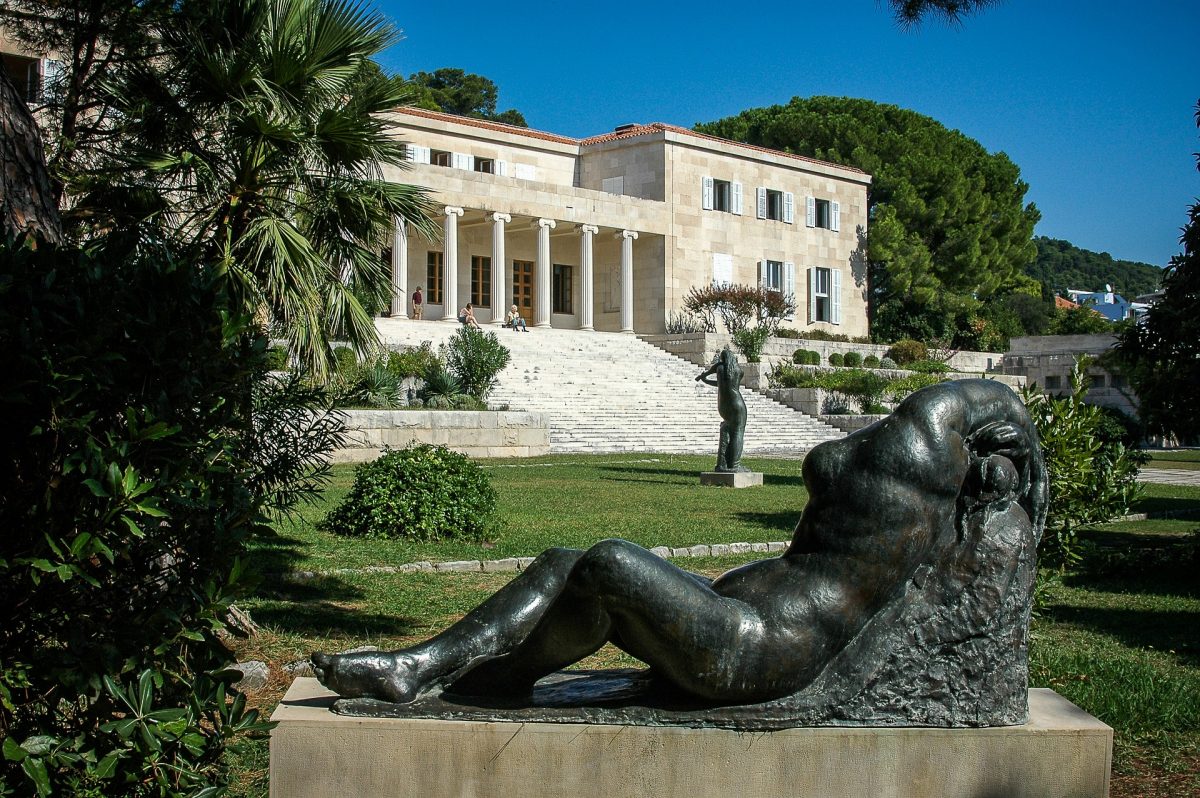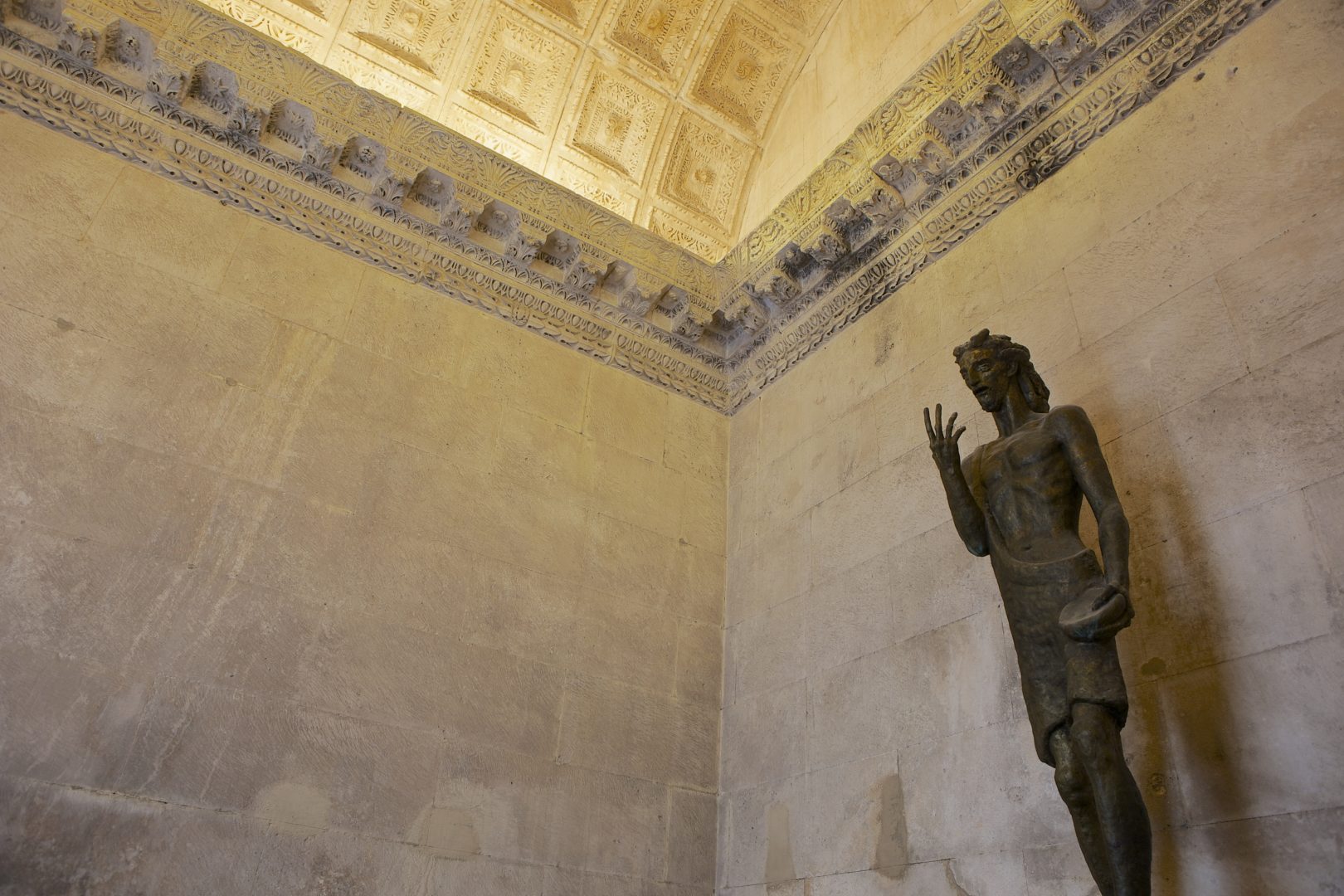Split is Croatia’s second-largest city and the largest city in the Dalmatian region, with approximately 250,000 inhabitants in the urban area.
Split is Croatia’s second-largest city and the largest city in the Dalmatian region, with approximately 250,000 inhabitants in the urban area. It lies on the east coast of the Adriatic and extends to a central peninsula and its surroundings.
1. Diocletian’s Palace

Diocletian’s Palace is an ancient palace built for the Roman emperor Diocletian at the turn of the fourth century AD, which today forms about half the old town of Split, Croatia. While it is referred to as a “palace” because of its intended use as the retirement residence of Diocletian, the term can be misleading as the structure is massive and more resembles a large fortress: about half of it was for Diocletian’s personal use, and the rest housed the military garrison.
2. Saint Domnius Cathedral

The Cathedral of Saint Domnius, known locally as the Sveti Dujam or colloquially Sveti Duje, is the Catholic cathedral in Split, Croatia. The cathedral is the seat of the Archdiocese of Split-Makarska, headed by Archbishop Marin Barišić. The Cathedral of St. Domnius is a complex of a church, formed from an Imperial Roman mausoleum, with a bell tower; strictly the church is dedicated to the Virgin Mary and the bell tower to Saint Domnius. Together they form the Cathedral of St. Domnius.
3. Mestrovic Gallery

Ivan Meštrović Gallery is an art museum in Split, Croatia dedicated to the work of the 20th-century sculptor, Ivan Meštrović. The gallery preserves and presents to the public the most significant works of Meštrović, and is in itself an art monument. The permanent collection includes works of sculpture, drawings, design, furniture, and architecture. Holdings include original plaster models by the artist, as well as finished works in bronze, marble, and wood.
4. Riva

The Riva started to look the way it does today two centuries ago, when the French, in time of Napoleon ruled these parts through Marshal Marmont. Today this promenade is the cities living room, the most popular and most important public place in Split. In the meantime, it has been widened and reconstructed several times, but it was always blessed with the most spectacular setting, the south facade of the Diocletian Palace, with the entrance into the Substructures, and later on with the buildings that were built west of the Palace, also the Franciscan monastery with the church of St. Francis, and the Bajamonti Dešković Palace and last but not least the Port Authorities building on the east end.
5. Jupiter’s Temple

The Temple of Jupiter is a temple in Split, Croatia dedicated to the Ancient Roman god Jupiter. It is located in the western part of Diocletian’s Palace near the Peristyle, the central square of the imperial complex. It was built between 295 and 305, during the construction of the Palace, and was probably turned into Baptistery of St. John the Baptist in the 6th century, at the same time when the crypt dedicated to St. Thomas was built.
